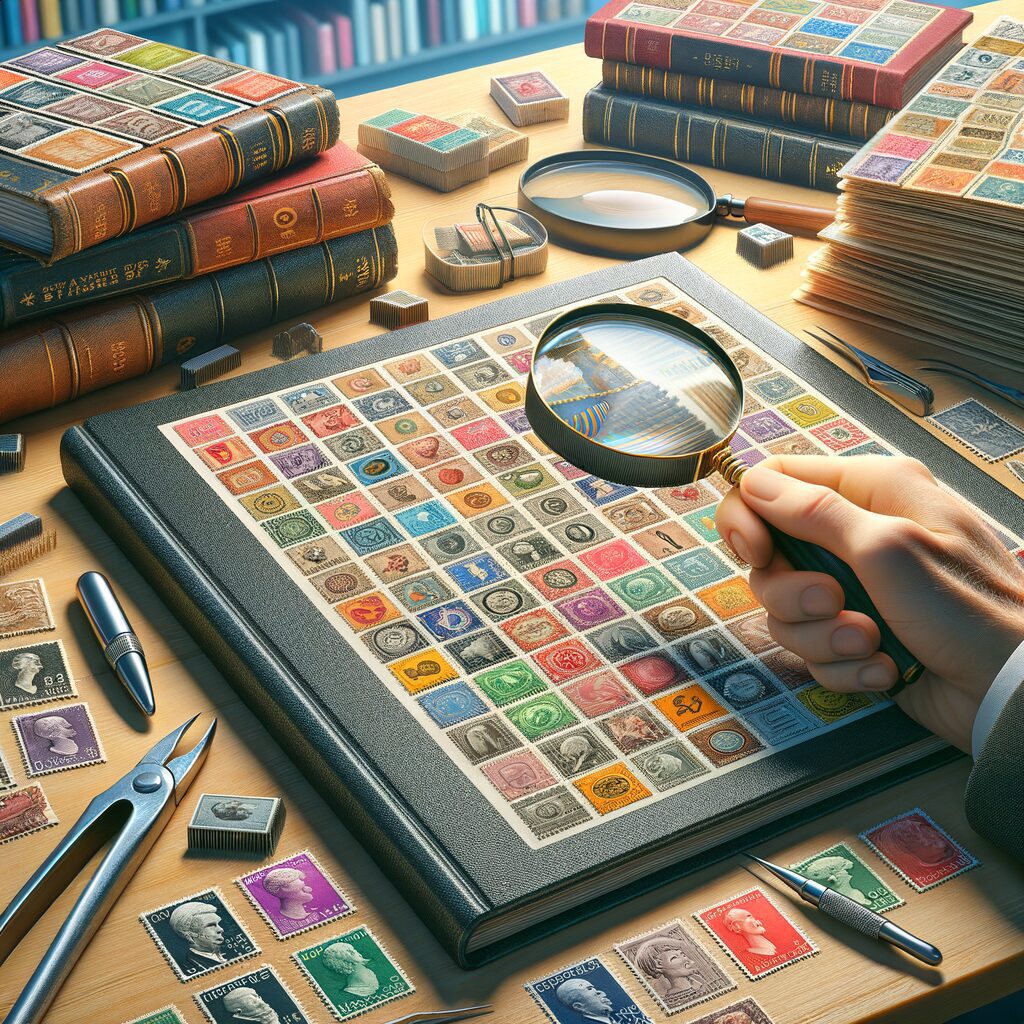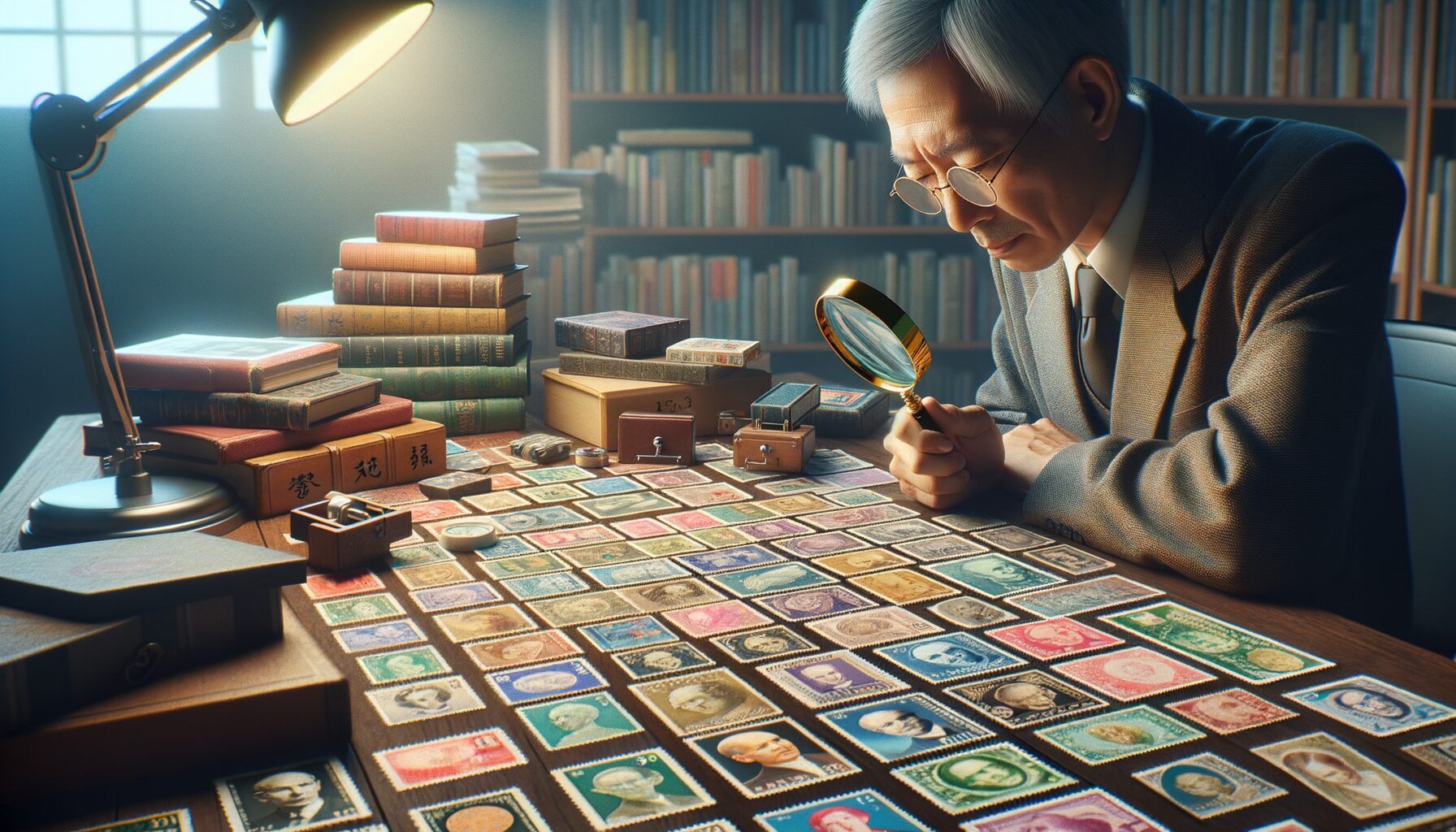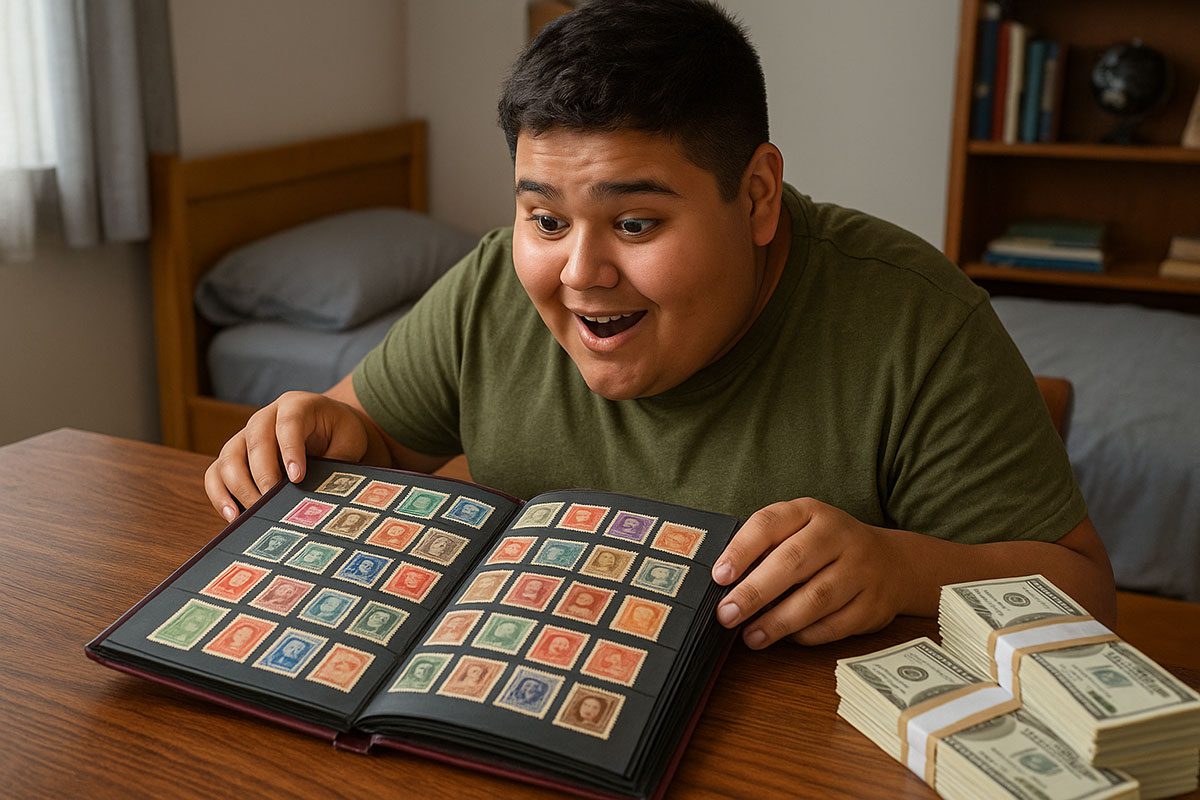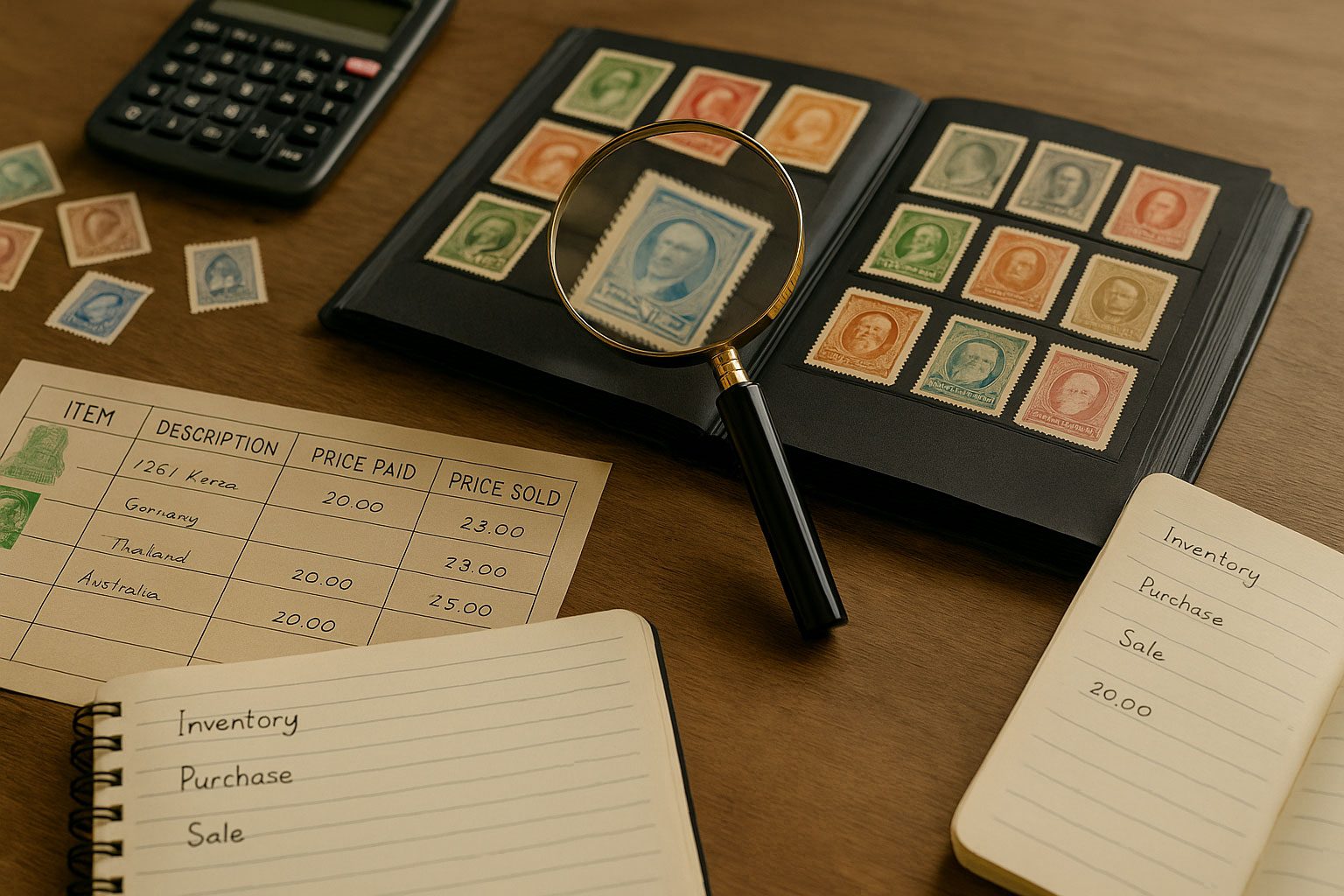Collecting stamps as a hobby has intrigued individuals for over a century. This pastime combines elements of history, art, and personal satisfaction. Stamps, first introduced in the 19th century, revolutionized communication. They served as proof of postage payment and quickly became collectible items. The historical significance of stamps is a major attraction for collectors.
The Historical Significance and Evolution of Stamps
Stamps have evolved significantly since their inception. The first adhesive postage stamp, the Penny Black, was issued in 1840 in the United Kingdom. This innovation simplified the mailing process and set a precedent for other countries. As nations adopted stamps, they began to reflect cultural and historical themes. Stamps commemorate events, honor leaders, and celebrate achievements. This historical context enriches the collecting experience.
Key Reasons Why People Are Drawn to Stamp Collecting
Collecting stamps as a hobby appeals to a diverse range of individuals. Some are drawn to the historical narratives that stamps represent. Others appreciate the artistic designs and intricate details. The hobby offers a sense of nostalgia, connecting collectors to different eras. The thrill of finding rare or unique stamps adds excitement to the pursuit.
Different Types of Stamps and Their Purposes

Stamps come in various types, each serving a distinct purpose. Definitive stamps are issued for everyday postal use and often feature simple designs. Commemorative stamps celebrate specific events or anniversaries and are usually issued in limited quantities. Airmail stamps are used for mail transported by air, often featuring aviation themes.
Specialized stamps, such as revenue stamps, are used for tax or fee payments. Postage due stamps indicate insufficient postage on mail. Understanding these types enhances a collector’s appreciation and knowledge. Each type offers unique insights into postal history and cultural significance.
The Artistic and Aesthetic Appeal of Stamps
Stamps are not only functional but also artistic creations. Designers invest considerable effort into creating visually appealing stamps. They use vibrant colors, intricate patterns, and symbolic imagery. This artistic aspect attracts those with an appreciation for design and creativity. Collecting stamps as a hobby allows individuals to curate a personal gallery of miniature artworks.
The Educational Aspect of Stamp Collecting
Stamp collecting offers educational benefits beyond historical knowledge. It encourages research into the stories behind each stamp. Collectors learn about geography, politics, and cultural diversity. This pursuit of knowledge fosters intellectual curiosity and lifelong learning. Engaging with stamps broadens one’s understanding of global events and cultural narratives.
Collecting stamps as a hobby provides a multifaceted experience. It combines history, art, and education, offering diverse rewards. Whether motivated by historical interest or artistic appreciation, stamp collecting continues to captivate enthusiasts worldwide.
Starting Your Stamp Collection

Embarking on a stamp collection journey requires thoughtful preparation. Understanding the essentials will enhance your collecting experience. Begin by gathering the necessary tools and materials. A magnifying glass is crucial for examining the fine details of stamps. Tweezers are essential for handling stamps without causing damage. A stamp album or stockbook will help organize and protect your collection.
Choosing a Theme or Focus
Selecting a theme or focus for your collection is an important step. Some collectors choose to concentrate on a specific country or region. Others might prefer thematic collections, such as stamps featuring animals, sports, or historical events. Choosing a theme provides direction and purpose to your collecting efforts. It also makes the process more enjoyable and meaningful.
Sourcing Stamps: Local and Online Options
Finding stamps to add to your collection can be an exciting part of the hobby. There are several avenues to explore when sourcing stamps. Local post offices often sell commemorative stamps, which can be a good starting point. Stamp dealers and specialty shops offer a wide range of options for collectors. Online marketplaces provide access to stamps from around the world.
Attending stamp shows and exhibitions is another excellent way to acquire stamps. These events bring together dealers and collectors, offering a diverse selection. Auctions, both online and in-person, can also be a valuable resource. They provide opportunities to acquire rare or unique stamps. Networking with other collectors can lead to exchanges or trades, expanding your collection.
Understanding Stamp Types and Terminology
Familiarizing yourself with stamp types and terminology is beneficial. Stamps come in various forms, such as definitive, commemorative, and airmail. Each type serves a different purpose and has unique characteristics. Understanding these differences will enhance your appreciation and knowledge.
Terminology is also important in the world of stamp collecting. Terms like perforation, cancellation, and watermark are commonly used. Learning these terms will help you communicate effectively with other collectors. It will also aid in accurately describing and categorizing your stamps.
Setting a Budget and Managing Expenses
Establishing a budget is crucial for managing your collecting expenses. Stamp collecting can range from an inexpensive hobby to a significant investment. Determine how much you are willing to spend on your collection. This will help you make informed decisions and avoid overspending.
Consider the costs of tools, storage, and purchasing stamps. Be mindful of the potential for impulse buying, especially at auctions or shows. Setting financial limits will ensure that your hobby remains enjoyable and sustainable.
Starting a stamp collection involves careful planning and consideration. By gathering the right tools, choosing a focus, and understanding the basics, you can build a rewarding collection. Engaging with the community and exploring various sources will enrich your experience. With a thoughtful approach, your collection can grow and evolve over time.
Preservation and Organization Techniques
Collecting stamps as a hobby requires careful attention to preservation and organization. Proper handling and storage are essential to maintain the condition of your stamps. The value and appeal of a collection can diminish if stamps are damaged or poorly organized. Implementing best practices will ensure your collection remains in excellent condition.
Best Practices for Handling and Storing Stamps
Stamps are delicate and require gentle handling. Always use tweezers to pick up stamps, avoiding direct contact with your fingers. Oils and dirt from your hands can damage stamps over time. Store your stamps in a cool, dry environment to prevent moisture damage. Humidity and temperature fluctuations can cause stamps to curl or stick together.
Using protective materials is crucial for preserving your collection. Stamp albums and stockbooks with acid-free pages are ideal for storage. These materials prevent discoloration and deterioration. Hinges or mounts can secure stamps in place without causing harm. Ensure that your storage solutions are of high quality to protect your investment.
Methods for Cataloging and Documenting Your Collection
Organizing your collection involves cataloging and documenting each stamp. This process helps you keep track of your collection and identify gaps. Start by sorting stamps according to your chosen theme or focus. Arrange them by country, date, or subject matter, depending on your preference.
Creating a catalog or inventory is beneficial for managing your collection. Record details such as the stamp’s origin, date of issue, and condition. Include any unique features or historical significance. This documentation will aid in assessing the value and completeness of your collection.
The Importance of Condition and Grading
The condition of a stamp significantly affects its value and desirability. Collecting stamps as a hobby involves understanding the grading system. Grading assesses the quality and preservation of a stamp. Factors such as centering, perforations, and color impact a stamp’s grade.
Stamps are typically graded on a scale from poor to superb. A superb stamp is well-centered with intact perforations and vibrant color. Familiarize yourself with grading standards to evaluate your collection accurately. This knowledge will assist in making informed purchasing and trading decisions.
Regularly inspecting your collection is important for maintaining its condition. Check for signs of damage, such as fading, tears, or mold. Address any issues promptly to prevent further deterioration. Proper care and attention will preserve the integrity and value of your collection.
Collecting stamps as a hobby offers both enjoyment and responsibility. By implementing effective preservation and organization techniques, you can safeguard your collection. Understanding the importance of condition and grading enhances your appreciation and knowledge. With diligent care, your collection can be a source of pride and satisfaction for years to come.
Engaging with the Stamp Collecting Community

Engaging with the stamp collecting community can greatly enhance your experience. This hobby offers numerous opportunities to connect with fellow enthusiasts. By participating in clubs, attending events, and utilizing online platforms, collectors can expand their knowledge and network. These interactions provide valuable insights and foster a sense of camaraderie.
Joining Stamp Clubs and Societies
Stamp clubs and societies are excellent resources for collectors. These organizations bring together individuals with a shared interest in stamps. Members often participate in meetings, discussions, and educational sessions. Joining a club provides access to a wealth of knowledge and expertise. Experienced collectors can offer guidance and advice to newcomers.
Many clubs organize events such as stamp swaps and auctions. These gatherings allow members to exchange stamps and acquire new pieces. Clubs also publish newsletters and journals, offering articles and updates on the latest trends. Membership in a stamp club can be a rewarding and enriching experience.
Attending Stamp Shows and Exhibitions
Stamp shows and exhibitions are important events in the collecting community. These gatherings attract dealers, collectors, and experts from various regions. Attending a stamp show provides an opportunity to view and purchase a wide range of stamps. Exhibitions often feature rare and unique items, offering inspiration and insight.
These events also host seminars and workshops on various aspects of stamp collecting. Topics may include preservation techniques, valuation, and historical context. Participating in these sessions can enhance your understanding and appreciation of the hobby. Networking with other attendees can lead to valuable connections and friendships.
Utilizing Online Forums and Resources
The internet offers a wealth of resources for stamp collectors. Online stamp collecting forums and communities provide platforms for discussion and exchange. Collectors can seek advice, share experiences, and showcase their collections. These forums often include sections for buying, selling, and trading stamps.
Websites and blogs dedicated to stamp collecting offer articles, guides, and tutorials. These resources cover a wide range of topics, from beginner tips to advanced techniques. Online databases and catalogs provide information on stamp identification and valuation. Utilizing these digital tools can greatly enhance your collecting experience.
Social media platforms also play a role in connecting collectors. Groups and pages dedicated to stamp collecting offer a space for interaction. Members can share images, ask questions, and participate in discussions. Engaging with these online communities can broaden your perspective and knowledge.
The stamp collecting community offers a rich and supportive environment. By joining clubs, attending events, and exploring online resources, collectors can deepen their engagement. These interactions provide opportunities for learning, sharing, and growth. Embracing the community aspect of stamp collecting can lead to a more fulfilling and enjoyable experience.
Rewards and Challenges of Stamp Collecting

Collecting stamps as a hobby offers numerous rewards that extend beyond the mere acquisition of items. This pastime provides a unique blend of education, relaxation, and personal satisfaction. Engaging in stamp collecting can enrich one’s life in various ways, offering both intellectual and emotional rewards.
Educational and Cultural Insights
Stamp collecting provides a window into the history and culture of different nations. Each stamp reflects a piece of the past, commemorating events, people, and achievements. By studying stamps, collectors gain insights into historical contexts and cultural narratives. This exploration fosters a deeper appreciation for the diversity and richness of global heritage.
The hobby encourages continuous learning and curiosity. Collectors often research the stories behind their stamps, delving into historical events and figures. This pursuit of knowledge enhances one’s understanding of the world and its interconnectedness. Stamp collecting serves as an educational journey, broadening horizons and perspectives.
Personal Satisfaction and Relaxation
Collecting stamps as a hobby offers a sense of personal satisfaction and achievement. Building and organizing a collection provides a tangible sense of accomplishment. Each addition to the collection represents progress and dedication. This process of curation and growth can be deeply fulfilling and rewarding.
The hobby also serves as a relaxing and meditative activity. Sorting and arranging stamps requires focus and attention, providing a mental escape from daily stresses. The tactile nature of handling stamps and the visual appeal of their designs contribute to a calming experience. Engaging in stamp collecting can promote mindfulness and relaxation.
Opportunities for Investment and Financial Gain
While many pursue stamp collecting for personal enjoyment, there is potential for financial gain. Rare and well-preserved stamps can appreciate in value over time. Some collectors view their collections as investments, carefully selecting stamps with potential for future appreciation.
Understanding market trends and valuation is crucial for those interested in the investment aspect. Collectors must stay informed about demand and rarity factors. Engaging with experts and utilizing resources can aid in making informed decisions. While financial gain is not guaranteed, it can be a motivating factor for some collectors.
Challenges and How to Overcome Them
Stamp collecting also presents certain challenges that collectors must navigate. The vast array of stamps can be overwhelming for beginners. Establishing a focus or theme can help manage this complexity. Maintaining the condition of stamps requires diligence and proper storage techniques.
The potential for counterfeit stamps is another challenge. Collectors should educate themselves on identifying authentic stamps. Engaging with reputable dealers and experts can provide guidance and assurance. Staying informed and cautious will help mitigate these challenges.
Collecting stamps as a hobby encompasses a wide range of benefits. From educational enrichment to personal satisfaction, the hobby offers diverse rewards. Whether pursued for relaxation, investment, or social engagement, stamp collecting continues to captivate and inspire.




Leave a Reply